A Week (or two) Aboard S/V Sabado: 7/21/2024 – 8/04/2024
Hello and happy Sunday! Did you see our latest YouTube video?
Reflecting on my first year of sailing full-time, all my memories are positive. Sure, there was terrible weather, sleepless nights, and broken parts, but we always figured it out. That was part of the appeal of this lifestyle for me: thinking on your feet, being self-sufficient, solving puzzles. The challenges always felt kind of fun.
Fast forward to now, being in the middle of nowhere makes everything feel more serious. The more remote the destination, the greater the magnitude of responsibility, and here, that notion is amplified by the lack of protection. Conditions in the Tuamotus change faster than I’ve ever seen and rarely follow the forecast. We’ve seen 20kn turn into 40kn in seconds (when the forecast only said 15kn), and 6ft waves appear in our anchorage out of nowhere- and it’s not even storm season yet! Suppose our anchor chain gets caught around a coral head and snaps, or our windlass fails. We’re several days sail away from a replacement or the possibility of a replacement; chances are we’d still have to have it shipped from somewhere else and pay an exorbitant import fee. The shallow, sandy anchorages of the Bahamas and the multitude of chandleries in the Caribbean are long gone.
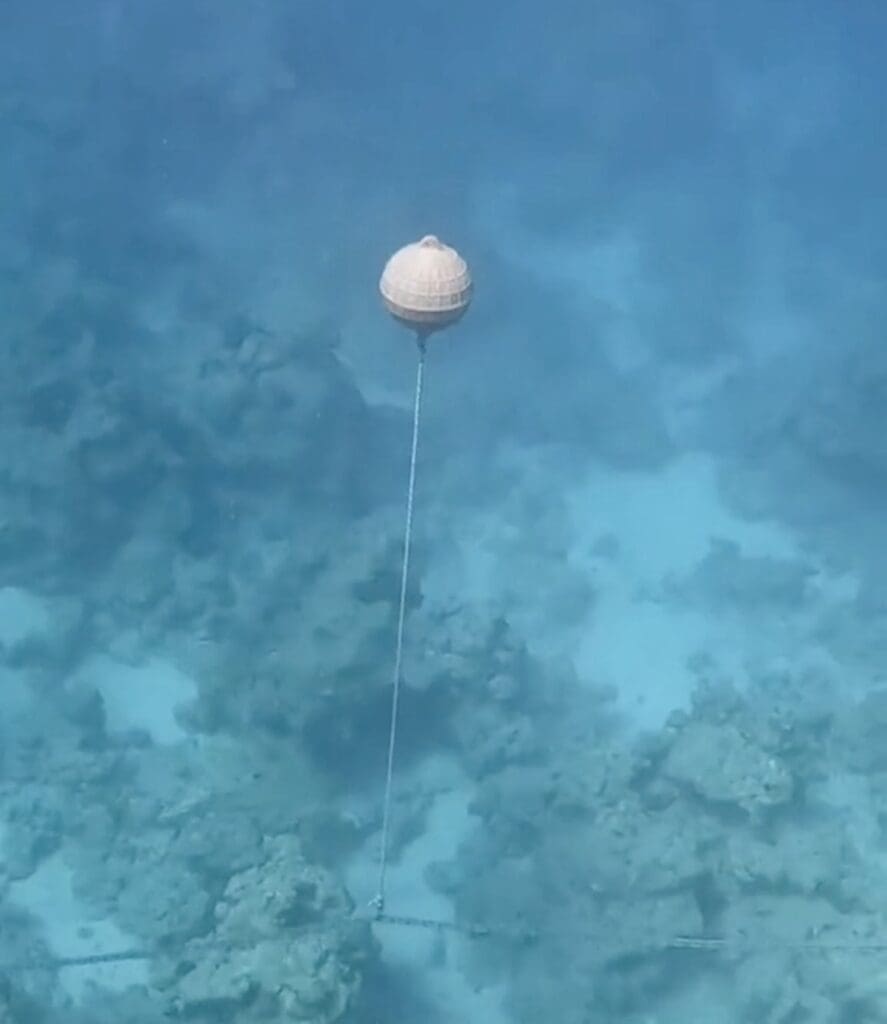
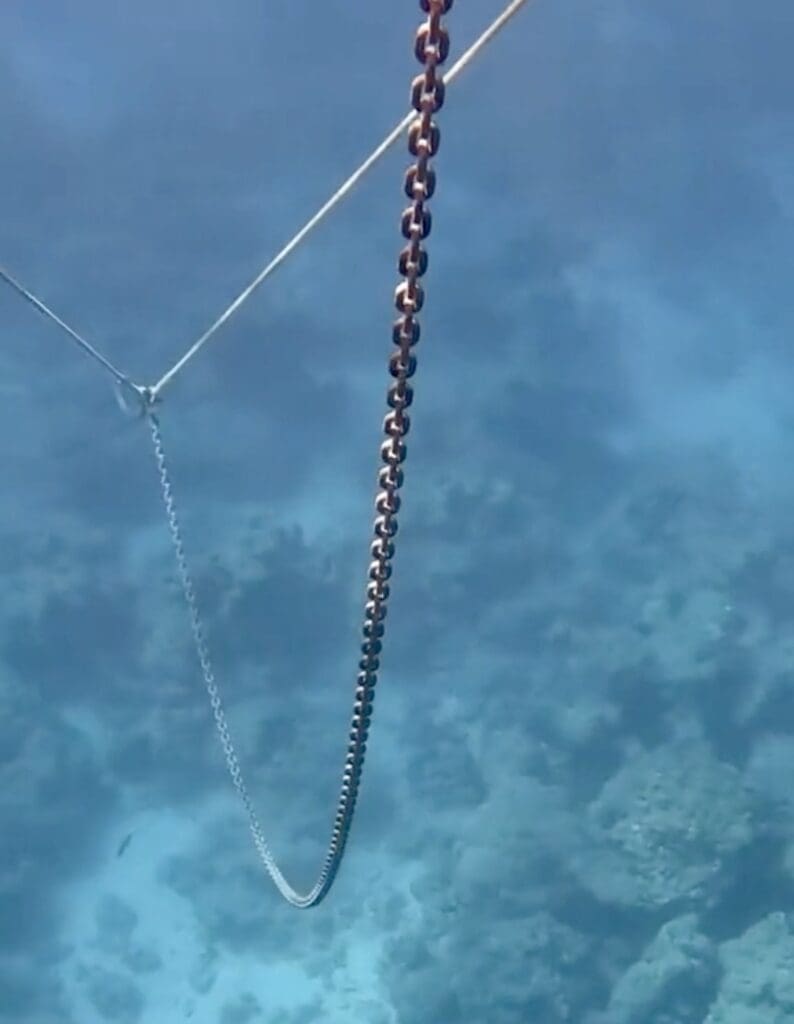
In the meantime, there are no marinas or mooring fields we could tuck into while we figure it out. We likely wouldn’t even be able to leave the anchorage because you need good visibility to navigate the minefield of bommies populating the lagoon to get to the pass. Even if you make it there, you’d have to hope for conditions allowing you to exit the pass, and emergencies never seem to happen in good conditions. The stakes feel exponentially higher here.
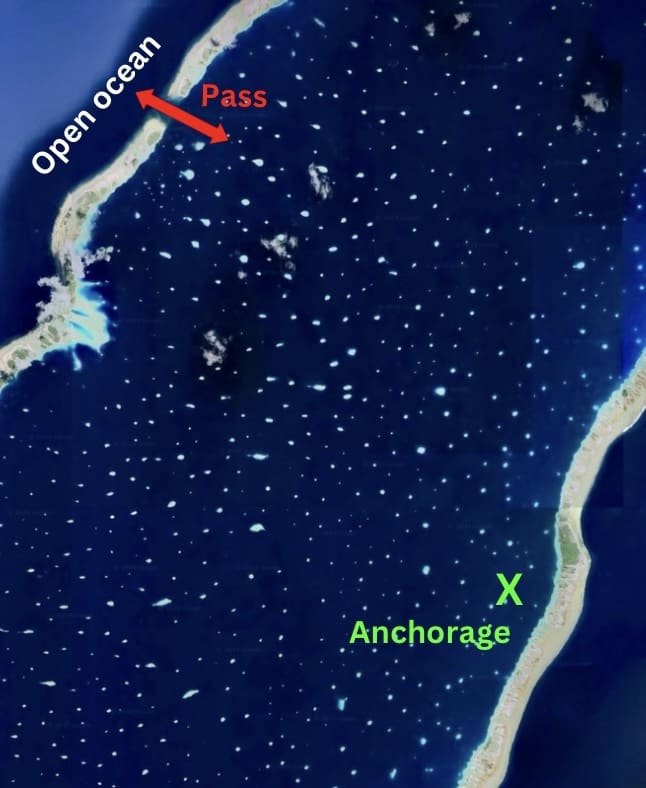
The last time we posted an update, we were anchored in Makemo. We rode out a five-day blow there. The wind shifted 180°, but it mostly agreed with the forecast, so we were prepared. Five days on the boat crept by slowly. We passed the time tackling various chores while the wind howled. Things finally calmed down on Friday, and we set sail toward Fakarava to get diesel. We motored to the pass, noticing a couple of bommies that didn’t appear on the satellite images and a strand of ~15 black/navy blue pearl farm floats, reaffirming our decision to always have someone keeping watch on the bow and someone at the helm when moving inside these lagoons. The tide tables were wrong again, and we were met with a 5kn outgoing current. Ray was putting the engines in reverse to steer! Once we reached the open ocean, we hoisted the sails and set our course.

Sabado happily flew through the water, SOG 6.5kn-7kn, using the main and jib. We had three bites on our handlines, but we could only land one fish—a bonito tuna that we threw back (they’re not the tastiest).
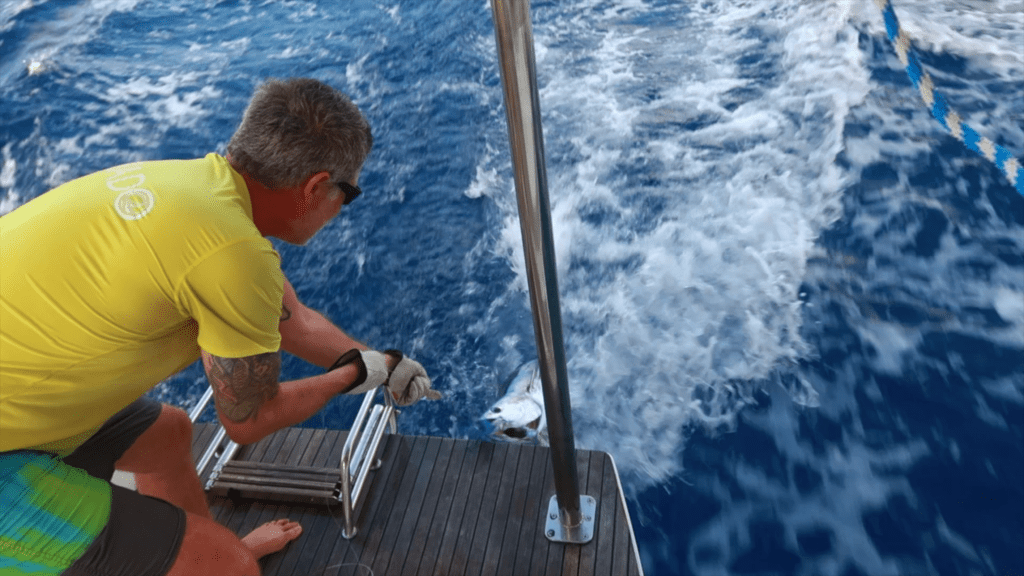
We reefed the main at sunset and slowed down overnight, timing our arrival with daylight + the estimated slack tide at the pass into Fakarava. Our chart plotter froze up several times, once while we were jibing. It is becoming quite a safety hazard, but getting a replacement here has proven incredibly difficult. A company in Tahiti quoted us $8K, but it’s $4K in the USA. Clearing a package through customs here seems to take at least four weeks and can incur many additional fees if we order it ourselves. So, we are still brainstorming.
We cleared the pass around 9am and motored to our anchorage. There is a marked shipping channel here, so it was basically a straight, bommie-free shot to the town. How refreshing! There were around 20 boats already anchored- the most we’ve seen since the Marquesas. We strategically selected our spot and dropped our anchor. The water was too deep and murky to see the bottom, but we floated our chain just in case and backed down hard. Sabado didn’t budge. We stayed up for a few hours, keeping watch before taking a quick nap and heading to shore for lunch. There are several restaurants here, and we hadn’t been out to eat since we arrived in the Marquesas, so we eagerly ordered and enjoyed an incredibly expensive burger and fries.
We stayed home, on anchor all day Sunday.
We brought our jerry cans to shore Monday morning, ready to fill our tanks so we could move along. We were told we could not refuel while the supply ship was docked. I assume all the fuel station employees are responsible for unloading the supply ship. No one could tell us when the supply ship would leave, either. So, we walked around town to kill some time before finally giving up and heading home. No big deal; we’ll try again another day!
The wind started to shift Tuesday morning. We rechecked the forecast and were surprised by the abrupt change. What was set to be a calm, clear week had turned into quite the storm system. The wind started picking up, and we grew concerned about a couple of monohulls that had rafted up.
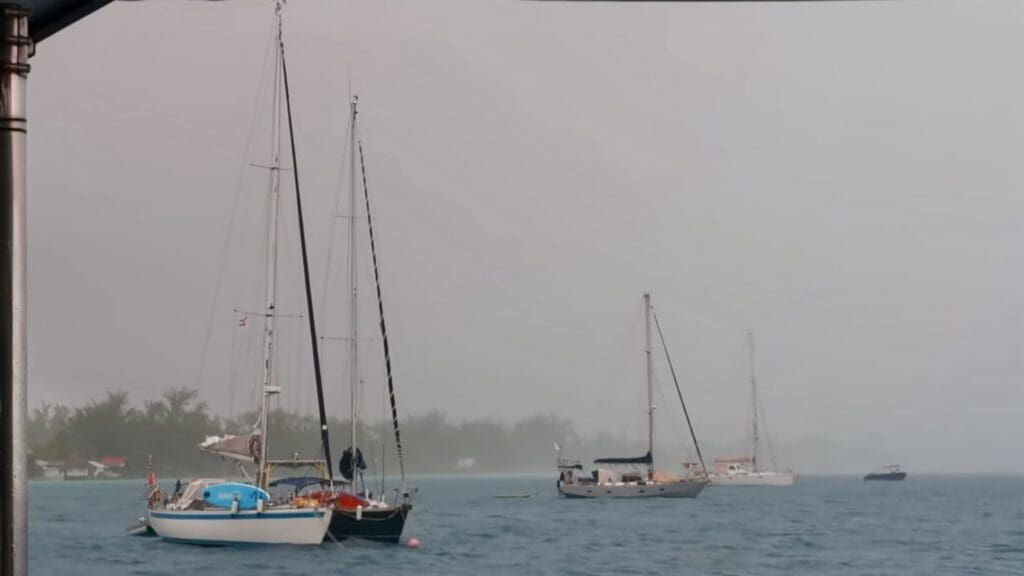
They had gone ashore, leaving one crew member aboard. We saw her pacing back and forth, wide-eyed, trying to shove more fenders between their hulls as the fetch sent them bouncing into the air. If they stayed together much longer, their masts could hit. The rest of the crew came speeding back on their dinghy and were able to detach in time. Phew!
I decided to take advantage of the cooler weather and exercise in the cockpit. The wind continued to build, and our anchor alarm sounded before I knew it. Ray and I jumped into action- remembering how quickly things went wrong when we dragged in Makemo. Thankfully, this time around, we had daylight on our side. Ray managed the helm- letting out a brief cheer when our chartplotter started working immediately. ? I ran to the bow, and of course, it had started pouring rain. I started pulling up our chain, praying it wouldn’t get caught on anything since we had no idea what the bottom looked like here. It came up nice and easy. I was able to remove our floats much quicker in the daylight- thank goodness. Full disclosure: I had been exercising in pajama shorts before laundry day, and they were sliding down my thighs, soaking wet and heavy from the rain. So, if you saw me mooning the anchorage that day, keep it to yourself. We motored over to the opposite side of the anchorage, watching several other boats begin dragging and pulling their anchors, too. I wouldn’t wish it on anyone, but part of me was glad it wasn’t just us. Before French Polynesia, I could count how many times we’ve dragged anchor over the years on one hand. Now, it’s happened twice in two weeks! The first time was our fault; we have triple-checked our scope calculations since then. We don’t make the same mistake twice! This time, we must have just not dropped in a large enough patch of sand so our anchor could not reset when the wind shifted. Seems like we weren’t the only ones.
We were able to re-drop our anchor and float our chain before the worst of the storm hit that afternoon. The wind was coming from the far end of the atoll, giving the fetch plenty of time to grow. We were getting tossed up and down, left and right. We saw someone’s bridle snap and a few more boats dragging. We still had no idea what the bottom looked like here, so for all we knew, our anchor could be stuck on a rock, and we could drag again at any moment. So, we decided to sleep in shifts in the saloon, keeping watch.
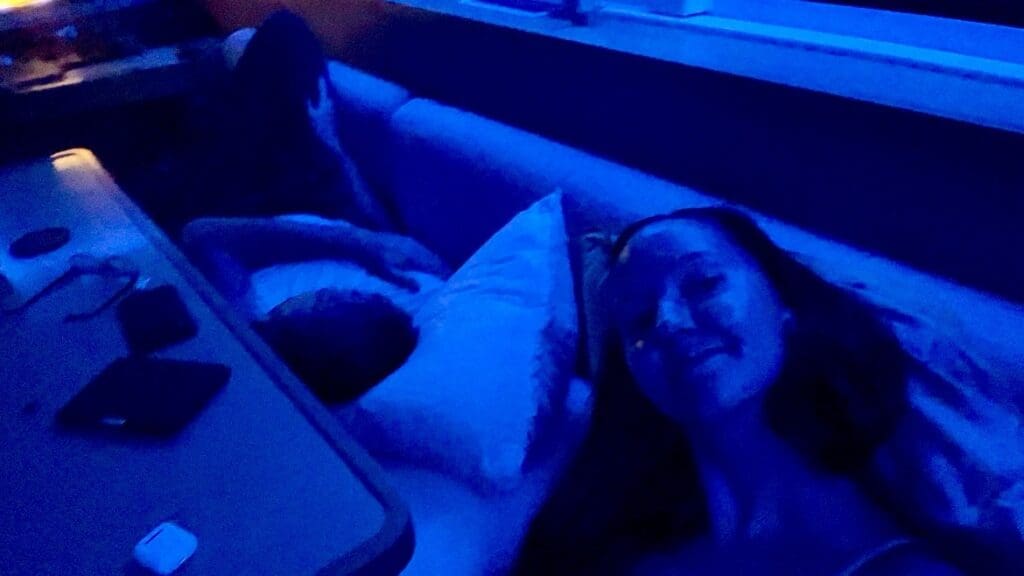
We made it through the night incident-free, and although it was still pretty bouncy, the wind had died down by morning, and we were able to refuel that afternoon. We were exhausted. It is beautiful here, and we are so lucky to see this incredible place, but the past two weeks have been crummy. We’re stressed. I bought a packet of cookies at the local shop to cheer me up, only to find a worm in them. I couldn’t help but laugh at that one. If we could go back in time, I think having scuba gear aboard, more chain, and a stronger windlass would help mitigate some of our anxiety.
We’ve spent the rest of the week figuring out our next move. The weather finally gave us a break, so we’ve run to shore a few times to explore, refill our propane tank, and do some laundry. Fakarava is the second-largest atoll in the Tuamotus and has a population of 837. There are a few restaurants and even accommodation options for tourists coming to dive the famous South Pass- known for its abundance of marine life. There is an airport, a kiteboarding school, and a yacht services building that offers heaps of resources to cruisers like us.
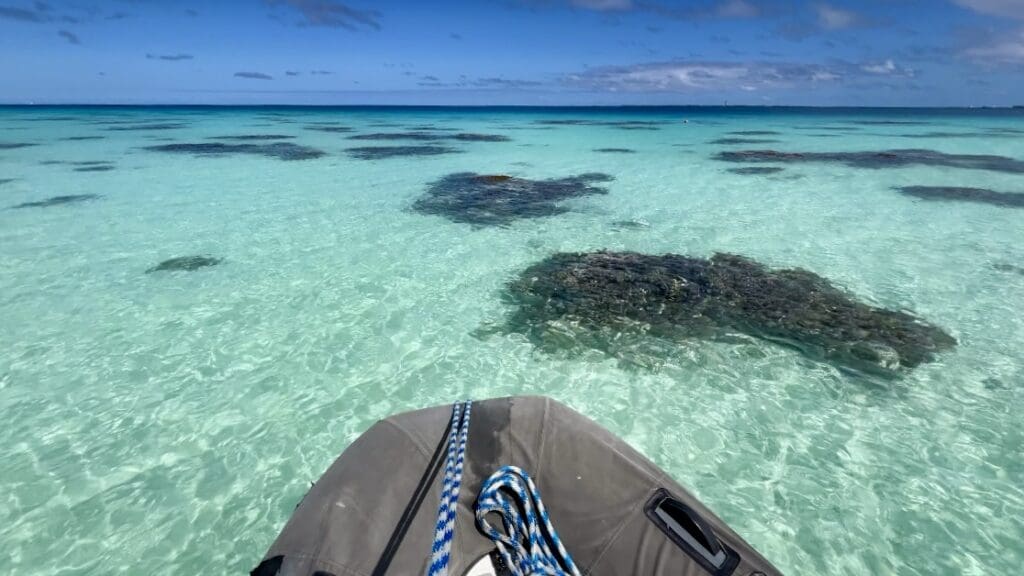
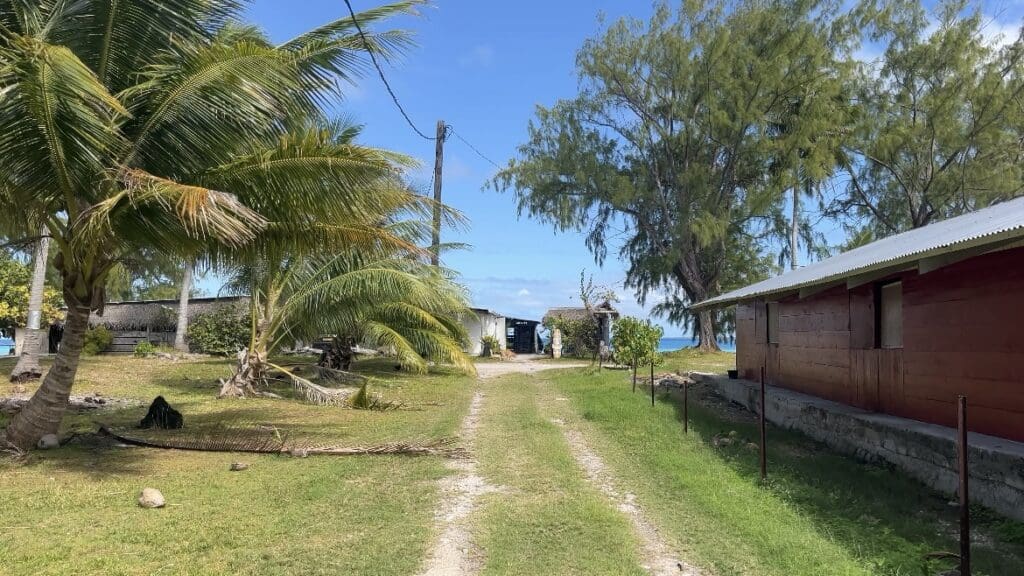
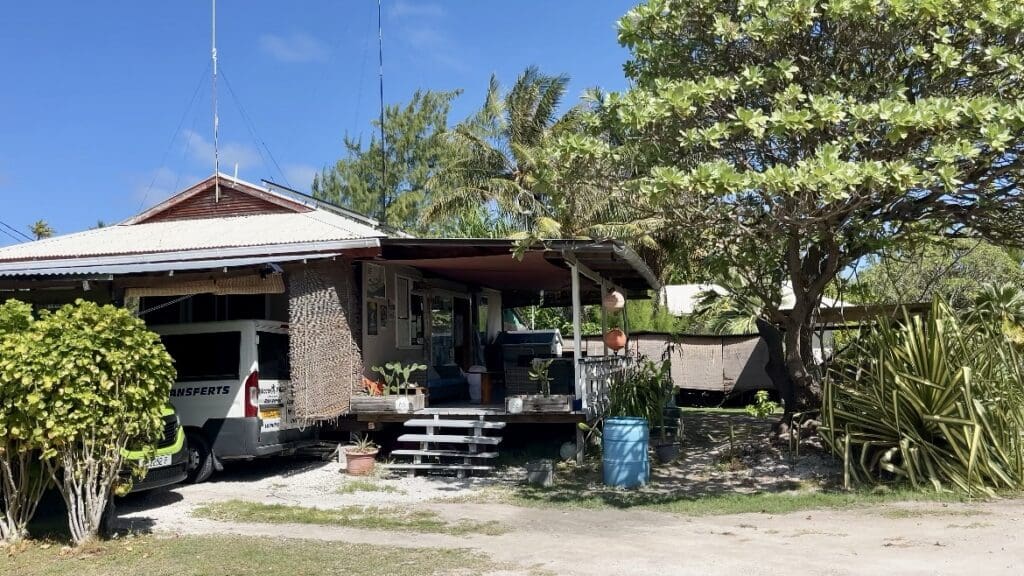
So, we’ve been enjoying our time. Things are looking up! When you’ve been isolated for days on end, dealing with poor, unpredictable conditions and failing equipment in the middle of nowhere, it’s easy to feel like the world is ending, but really, we’re just frustrated. We’ll figure it out, as we always do. That process just looks a lot different here…
We were tossed out of bed this morning around 2am as yet another front rolled through. This time, the wind is coming more from the east, so we are in a better position, but the sea state is still surprisingly uncomfortable. We can hear the fuel in our tanks sloshing around as we teeter from side to side. The swell is hitting us right on our beam.
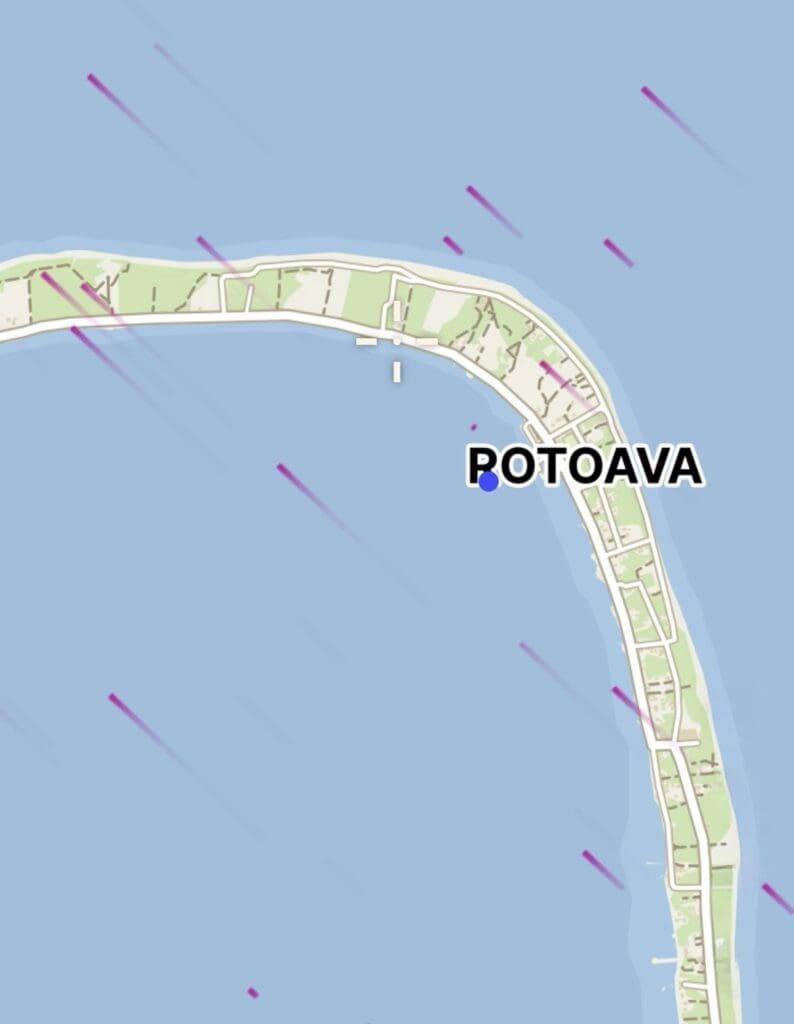
Hopefully, this won’t last long. We’re still undecided about what’s next for us. We’d love to check out a few more atolls before heading to Tahiti, or maybe we could go to Tahiti and sort out a replacement chart plotter, then come back. I’ll let you know what we decide!
I hope you had a great week. ❤️
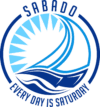

6 Responses
Yikes! Hang in there! It sounds like going to Tahiti would be a sensible option. I know I get stressed when the chart plotter goes blank, which has happened twice on my watch. But we weren’t in the middle of nowhere! Luckily it restarted right a away. The blank spot has to be unsettling as well. Thank you for giving us an accurate and honest view of your journey— the beautiful, challenging, and hopeful side of cruising the south Pacific. I was going to say, “the good, bad, and ugly” but that’s another Youtube channel! ?
Thanks, Kris! It’s a whole different ball game out here! ?
Great update, have an awesome week.
Thank you, Larry!
How often do you post videos and blog? This says the 4th and today is the 16th. And your location is the 9th. Enjoyed catching up on all your videos. Your snorkeling clips are by far the best from live boarders I’ve seen.
Thank you for your kind words! ❤️The goal is to post weekly, but since everything we post is in real time, sometimes we can’t get something together fast enough. New video will be up this Saturday (with snorkeling clips!) and hopefully another blog on Sunday. 🙂